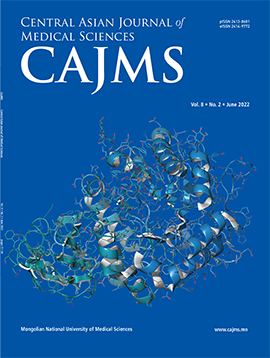Efficacy and Safety of Radiofrequency Ablation Versus Surgery for Thyroid Nodules
DOI:
https://doi.org/10.24079/cajms.2022.09.005Keywords:
Radiofrequency Ablation, Thyroid, Nodule, Intervention, TumorAbstract
Objectives: To assess the efficacy and safety of radiofrequency (RF) ablation versus surgery for benign thyroid nodules for 24 months period. Methods: From January 2019 to January 2021, 200 patients with nodular goiters who underwent surgery (group A) and 183 patients treated by radiofrequency ablation (group B) were enrolled in this study. Inclusion criteria were the following: 1) cosmetic problem, 2) nodule-related symptoms, 3) refusal of surgery (for group B). An internally cooled radiofrequency ablation system and an 18 g internally cooled electrode were used. We compared the 2 groups in terms of efficacy, and safety during a 2-year follow-up. Results: Nodule type did not differ between groups, although in total 60.1 % were solid, 31.3 % were mixed, and 8.6 % were cystic. However, the number of nodules, median volume before surgery, and diameter of the nodule differed significantly. The median volume reduction was 34.6 % at 1 month, 56.1 % at 3 months, 70.6 % at 6 months, 73.9 % at 12 months, and 74.9 % at 24 months. Any volume reduction between follow-up intervals was statistically significant (p < 0.000). The most patients had no complications. However, surgical patients were more likely to have complications such as bleeding, hoarseness, and infection (14.5 %) than the RFA group (1.6 %). Conclusion: Surgical resection and radiofrequency ablation are both effective treatments of nodular goiter. Compared with surgery, the advantages of radiofrequency ablation include fewer complications, preservation of thyroid function, and fewer hospitalization days. Therefore, radiofrequency ablation should be considered a first-line treatment for benign thyroid nodules.
Downloads
333
Downloads
Published
How to Cite
Issue
Section
License
Copyright (c) 2022 Mongolian National University of Medical Sciences

This work is licensed under a Creative Commons Attribution-NonCommercial 4.0 International License.




